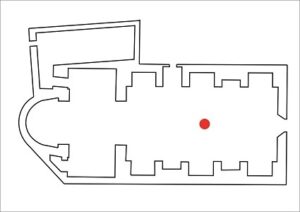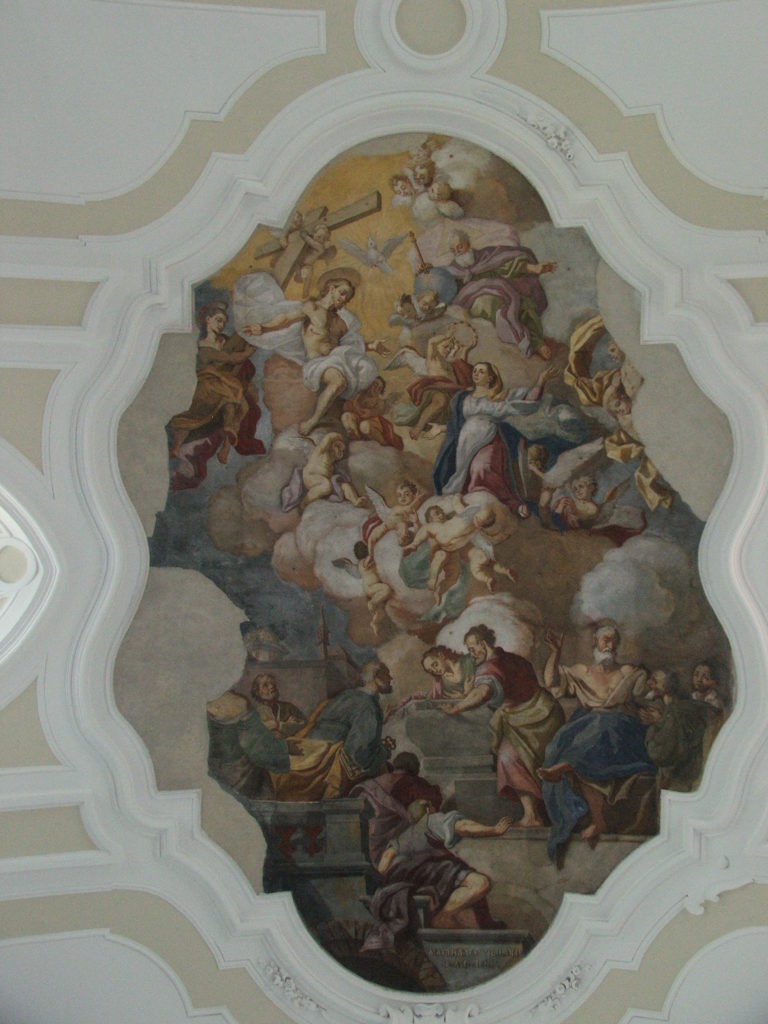Assunzione della Madonna


Chiesa di S. Maria Maggiore
Dipinto
Matteo Vigilante
Assunzione della Madonna
Sec. XVIII (dat. 1768)
Affresco

Church of S. Maria Maggiore
Painting
Matteo Vigilante
Assumption of the Madonna
18th century (date 1768)
Fresco
Il dipinto ad affresco, opera di Matteo Vigilante, pittore di origine solofrana, rappresenta l’Assunzione e l’Incoronazione di Maria Vergine.
Maria è appena stata deposta nel sepolcro e il suo corpo viene assunto in cielo, dove la SS. Trinità l’aspetta per incoronarla.
La scena è divisa in due parti: una parte inferiore dove è rappresentata l’umanità carnale, terrena, con la veduta di una città turrita, la tomba di Maria circondata dagli postoli, il pittore Vigilante e l’arciprete Pietro Antonio Perillo, committente e coordinatore della fabbrica della ricostruzione della Chiesa settecentesca. Nella parte superiore è raffigurato il divino, lo spirituale: in uno sfondo composto da nuvole, angeli e putti, riconosciamo quasi a fatica Maria, suo Figlio, Dio Padre e lo Spirito Santo, in forma di colomba.
La scena non compare nei Vangeli ma viene ripresa da alcuni testi apocrifi, dove si parla della “dormitio Virginis”, intesa anche come sonno, riposo, passaggio, seppellimento e nascita al cielo, momenti ai quali seguono la resurrezione, l’elevazione al cielo e l’incoronazione.
The fresco painting, by Matteo Vigilante, a painter of Solofrana origin, represents the Assumption and Coronation of the Virgin Mary.
Maria has just been deposed in the sepulcher and her body is taken to heaven, where the SS. Trinity waits for her to crown her.
The scene is divided into two parts: a lower part where carnal, earthly humanity is represented, with a view of a towered city, the tomb of Mary surrounded by the apostles, the painter Vigilante and the archpriest Pietro Antonio Perillo, client and coordinator of the factory for the reconstruction of the eighteenth-century church. The upper part shows the divine, the spiritual: in a background made up of clouds, angels and cherubs, we almost hardly recognize Mary, her Son, God the Father and the Holy Spirit, in the form of a dove.
The scene does not appear in the Gospels but is taken from some apocryphal texts, where we speak of the “dormitio Virginis”, also understood as sleep, rest, passage, burial and birth to heaven, moments followed by resurrection, elevation to heaven and the coronation.

